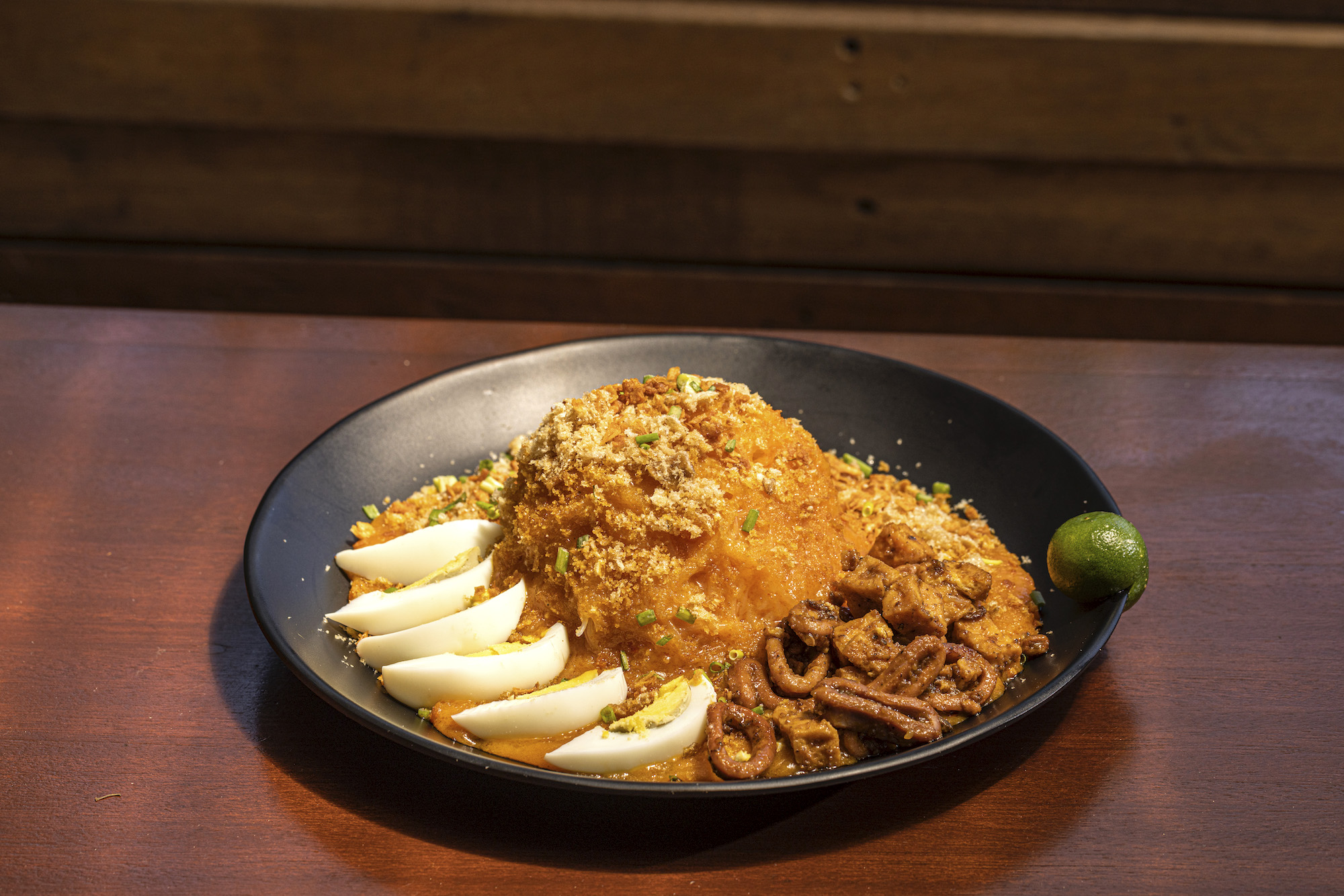As a child growing up in the province, there are few things that I associate with my grandmother other than food. She was an accomplished homemaker, with menus written down for the month and week, down to the very day.
Yet her cohesively thought-out menus ventured beyond the trifecta of breakfast, lunch, and dinner. She never forgot merienda, two “light” (a relative concept) meals—one taken in that idle period between breakfast and lunch, and another in the afternoon.
Until the day she passed, merienda was a staple in our household. The mornings were pretty straightforward; it’s what the many tins of biskwit or the leftover morning pandesal was for, taken usually with a side of butter and jam.
It was the afternoons that held more interest. Some days, it would be the creamy and cheesy pimiento spread she made by hand, one of her many signature recipes; other times, it would be the sweet and sticky kalamay or the fragrant, white tibok-tibok and pancit palabok from the neighborhood shop. Some days, she would have her cooks fry up golden and caramelly turon na saging or on a particularly hot day, whip up saging con yelo or halo-halo.
Merienda wasn’t just about the food though. It was a time to slow down, to pause and gather.
Merienda wasn’t just about the food though. It was a time to slow down, to pause and gather. It was a ritual that greeted members of the family coming home, a respite for household staff to reward themselves after a day’s work, a time to welcome neighbors and visitors into the home and invite them for snacks and refreshments.
And we weren’t alone in this tradition.
The cultural roots of merienda
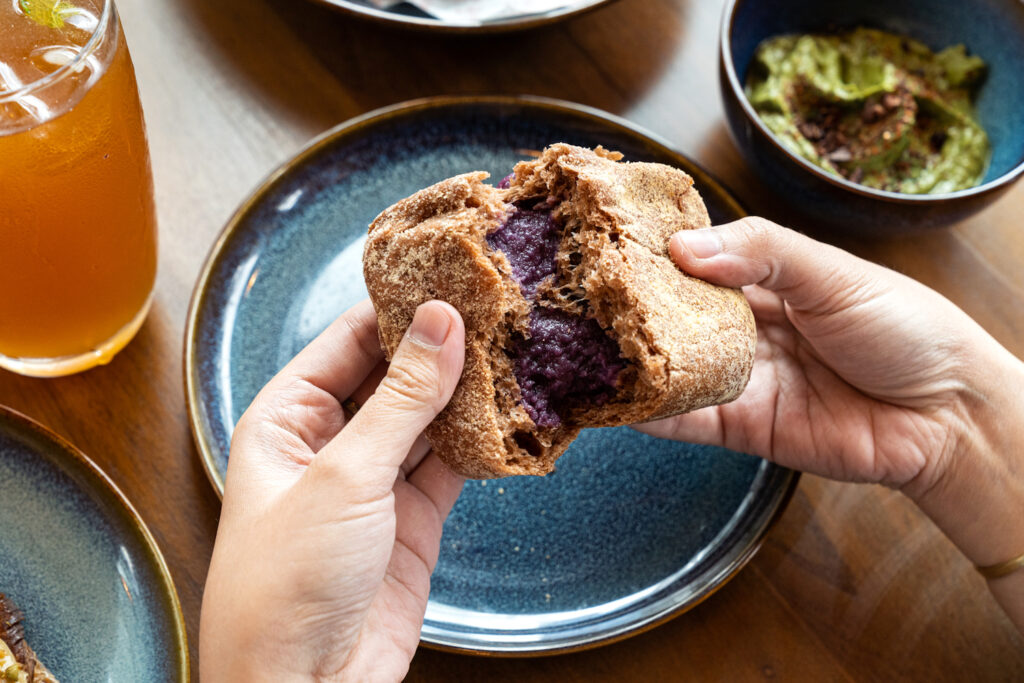
Merienda, also known as the fourth and fifth mealtimes, is a culinary habit that is so ingrained in Filipino culture as a vestige of our long, intertwined history with Spain.
But it’s not an exclusively Filipino concept either. In South America, also with a shared Spanish colonial past, countries such as Argentina, Paraguay, and Uruguay have merienda, too, served with afternoon coffee and pastries. Meanwhile, the Portuguese and Brazilians have their lanche, the Italians their merenda.
Cultural nuances may vary, but the essence is the same: They are meals, usually consisting of bread, pastries, or fruit along with beverages, taken in the afternoon or for brunch to fill in the gaps between dinner or lunch.
On our shores, merienda is an all-encompassing term for two light meals: a morning snack similar to the Spanish almuerzo or brunch (the former usually being bread or a sandwich with cured meats); the second one as our equivalent of the English afternoon tea.
On our shores, merienda is an all-encompassing term for two light meals: a morning snack similar to the Spanish almuerzo or brunch (the former usually being bread or a sandwich with cured meats); the second one as our equivalent of the English afternoon tea.
In the Philippines, merienda takes on a different flavor, literally and figuratively. The late food writer and historian Doreen Gamboa Fernandez described merienda in her book “Palayok: Philippine Food Through Time, on Site, and in the Pot” as the “pangtawid gutom,” literally “something to bridge hungers,” served “in mid-afternoon… which is often not just a snack but something hefty: dinuguan at puto, pansit, lumpia, ginataan, suman, bibingka.”
The anatomy of a local snack
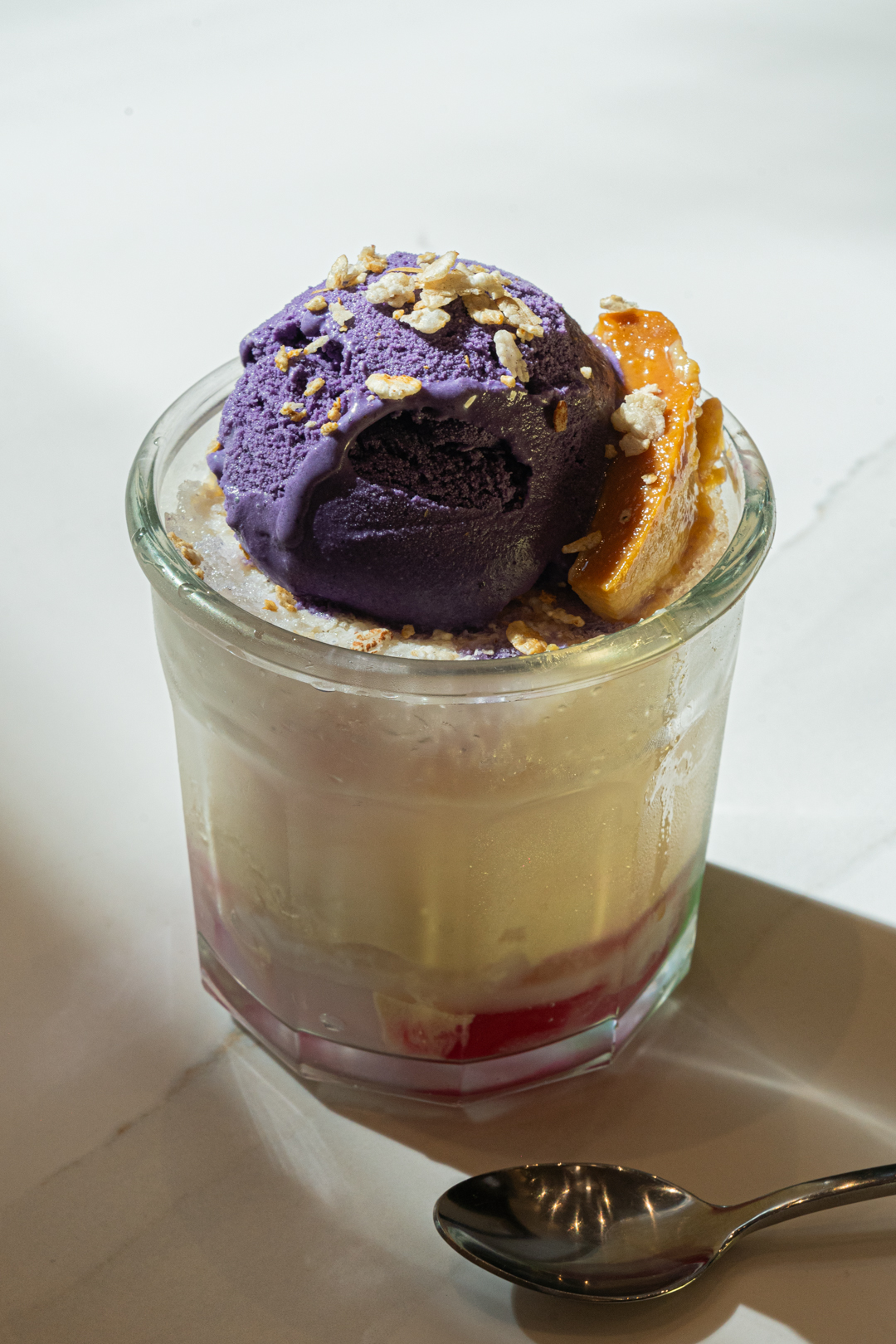
But what makes a meal a merienda? The time of day is important, but so is the nature of the dish. As Gamboa Fernandez said, the afternoon meal particularly should be filling without crossing over to a full meal: that is, in our context, rice and ulam. An exception would be merienda cena, when the merienda is taken close to dinner and can very well serve as its replacement.
It’s a cultural practice that persists to this day. Venture into the outskirts of the city and you will find the merienda culture alive and thriving: The most prolific example would be the foldable tables set up in villages selling sticks of barbecue and cups of mais con yelo or an array of minatamis. In provinces everywhere, you will certainly chance upon local carinderias serving their own regional fare, day-end local indulgences their regulars take in after a day of hard work.
Merienda in modern times
But what about the CBDs in Metro Manila, where food concepts culled from various parts and regions of the world pop up each day? In these enclaves where modern-day working hours and increasingly globalized sensibilities rule, is merienda a vanishing tradition?
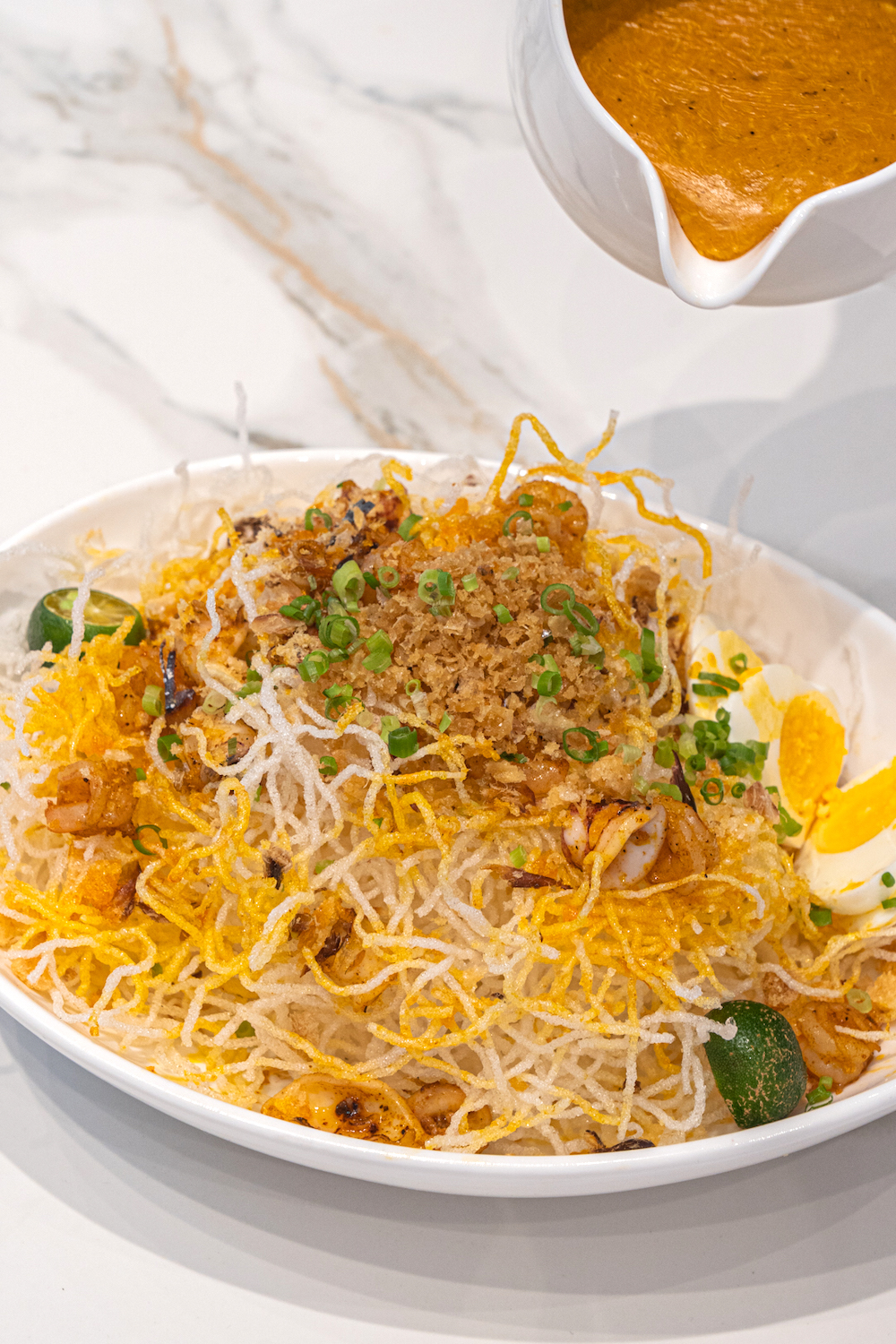
One can argue that beyond the usual suspects of mall-chain Filipino restaurants serving no-fail classics such as pancit, kakanin, and halo-halo, the custom of the afternoon merienda has simply lost its place in the rapid and frenetic pace of Manila’s glossiest districts.
While that may seem true at first glance, you need only look closer to see the opposite. In the same book, Fernandez also wrote about how because of colonization, everything Filipino is essentially American (by far still our largest Western influence)—down to our palates. Yet by that same argument, whatever American influences we’ve taken, we have managed to co-opt into something undoubtedly Filipino.
But what makes a meal a merienda? The time of day is important, but so is the nature of the dish. As Doreen Gamboa Fernandez said, the afternoon meal particularly should be filling without crossing over to a full meal: that is, in our context, rice and ulam.
Watch how office workers shuffle themselves into the nearest Starbucks or any other coffee shop for their coffee, pastries, or even a plate of pasta. It’s what fuels trends such as the milk tea craze or even more recently, the doughnut revival. The pandemic has birthed a smattering of cloud kitchens across the metro, serving all sorts of international fare—from burgers, ribs, and quesadillas to closer regional eats such as noodles or even the Indonesian murtabak.
Then there are heirloom establishments such as Mary Grace Café, which seem to bridge both worlds—both its familiar and polished facets—and hinge on the very concept of merienda with its ubiquitous ensaymada and hot chocolate.
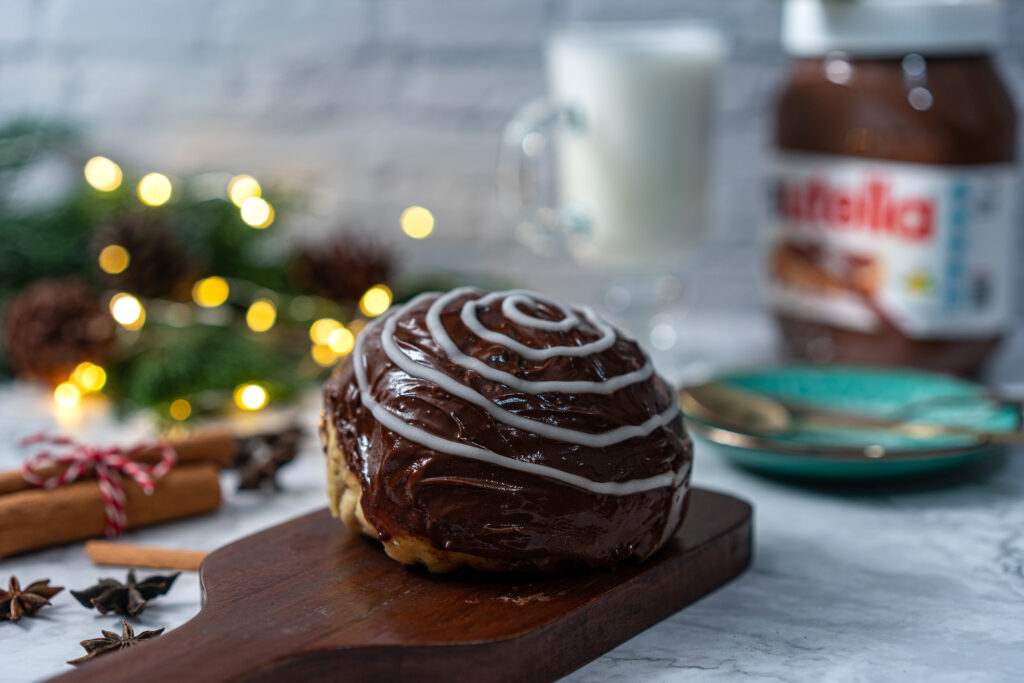
The word merienda is derived from the word merenda, with its roots in the Latin merere, which means to deserve or have right to. Interestingly enough, what all these food habits have in common—from your humble streetside stall to the state-of-the-art cloud kitchen, from the thick and traditional kakanin to the multi-layered French croissant—is they are all an invitation to slow down and momentarily indulge, even in a fast-paced world, because one deserves so.
And this boils down to one thing: While the concept of merienda may have shifted from its history over the years, it remains one of our local food traditions that continue to endure.





